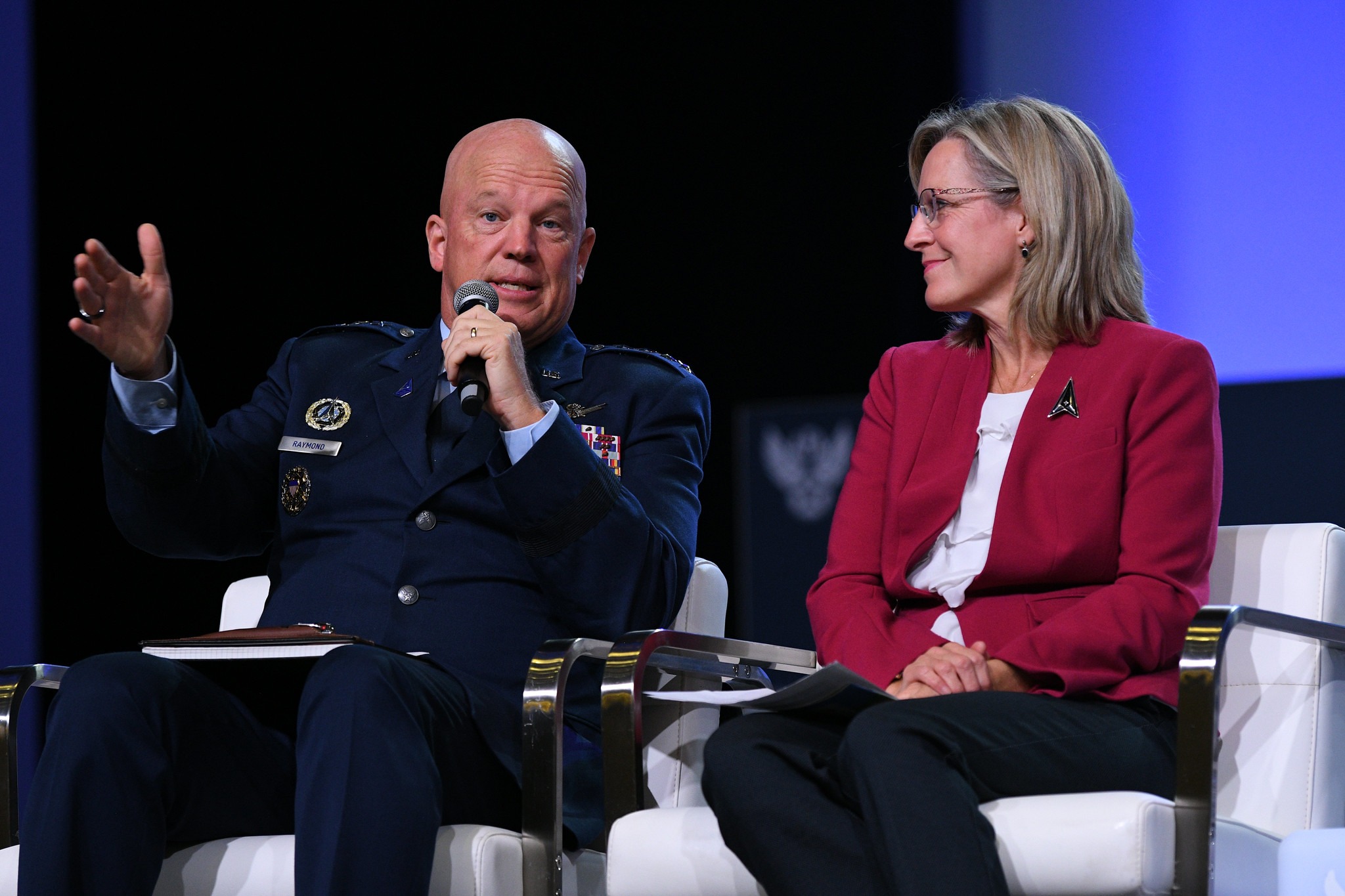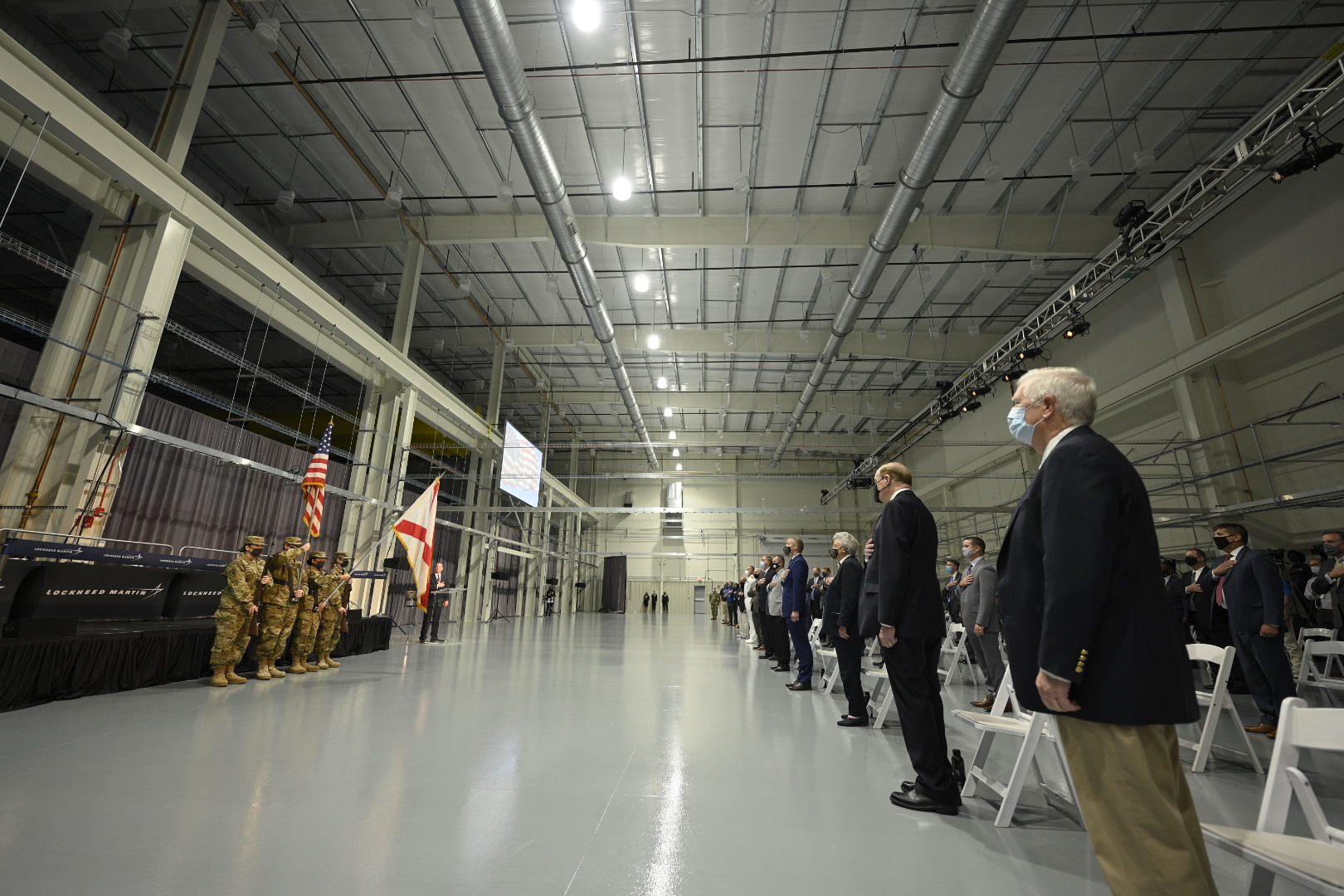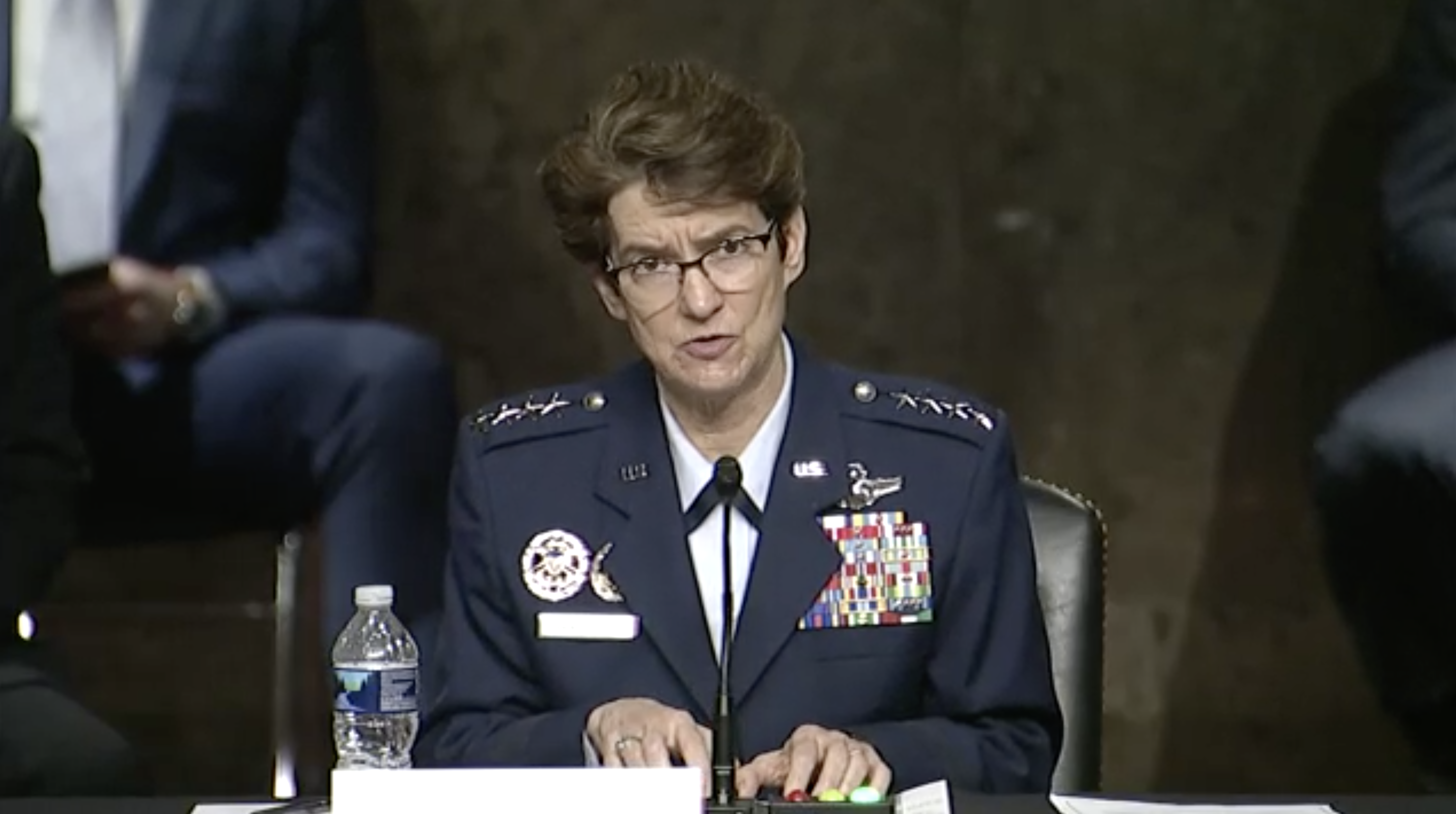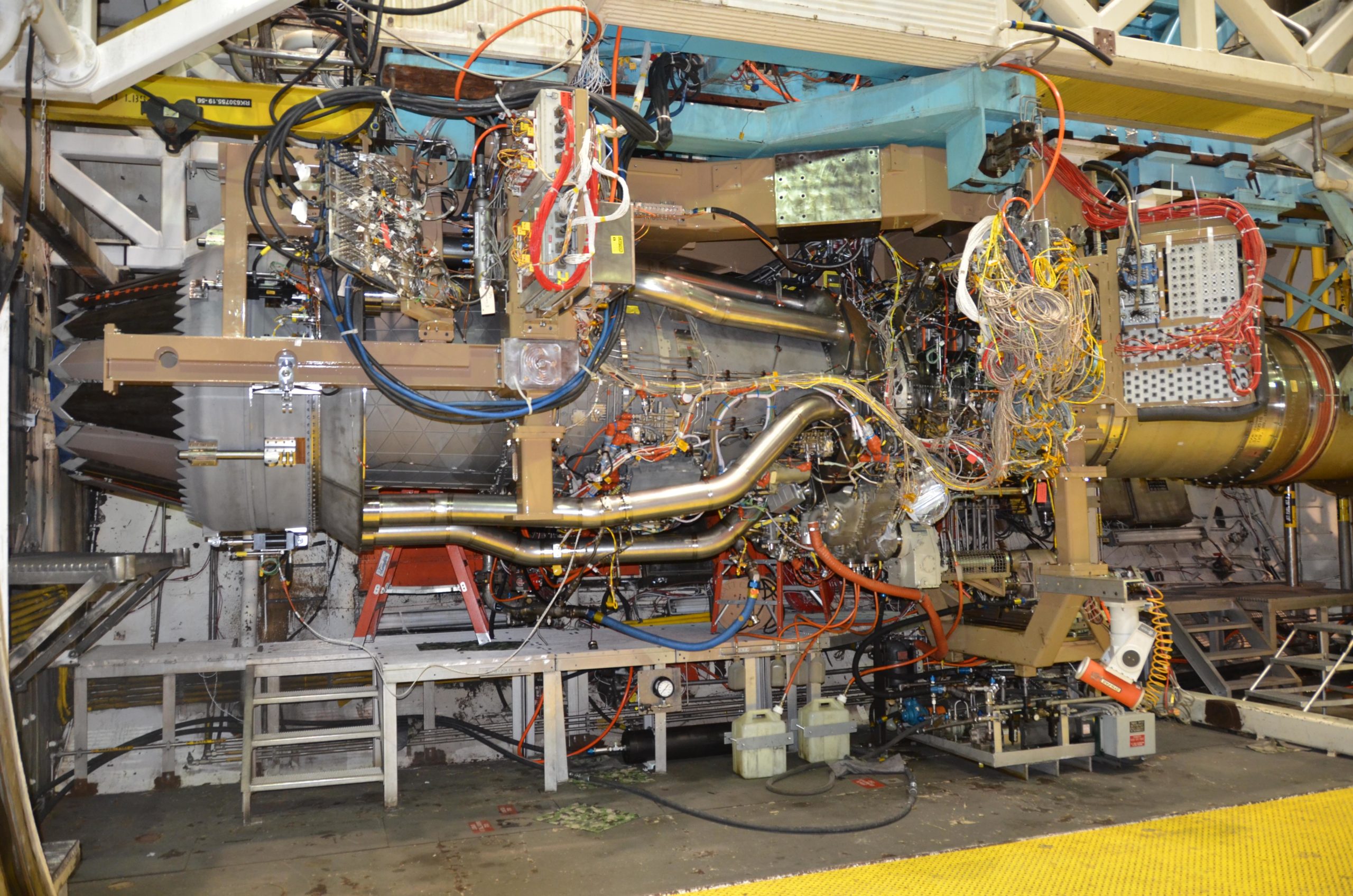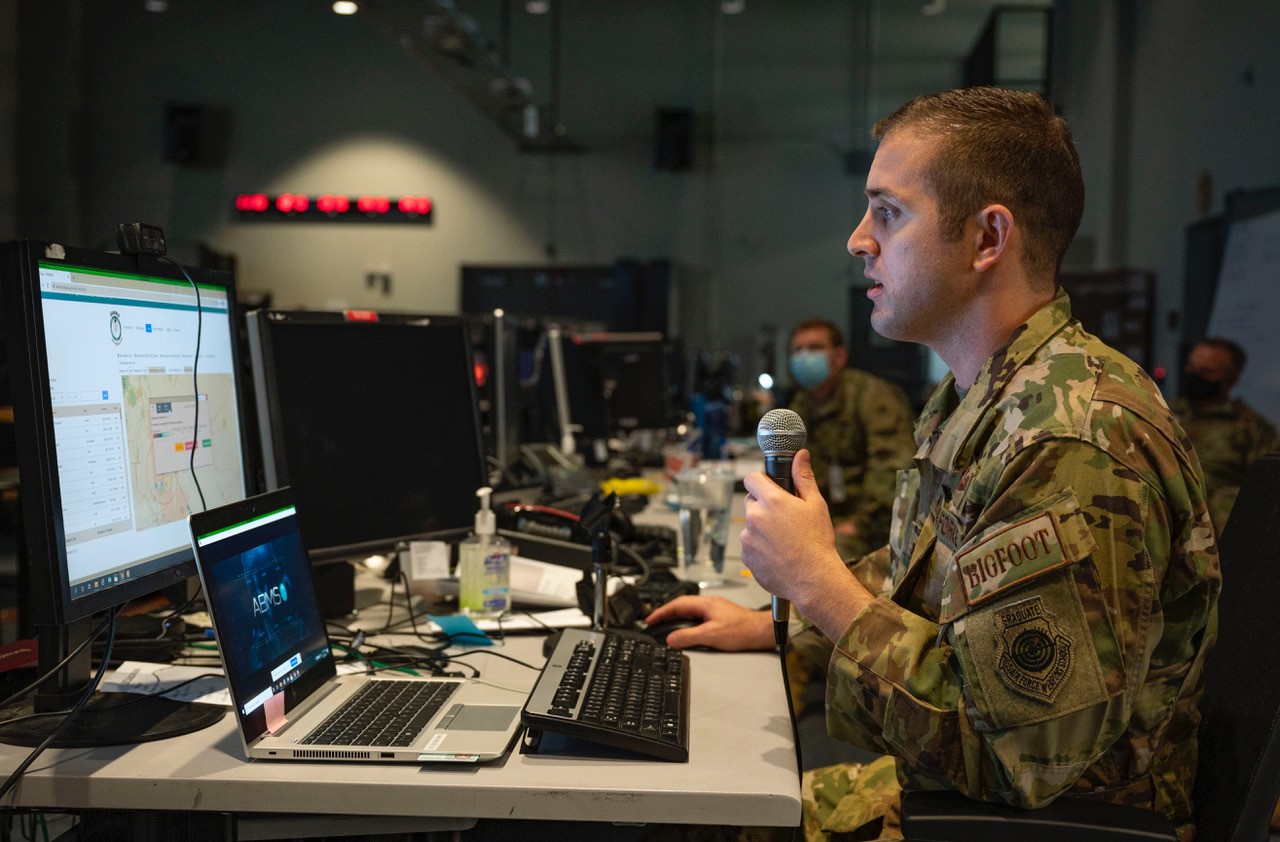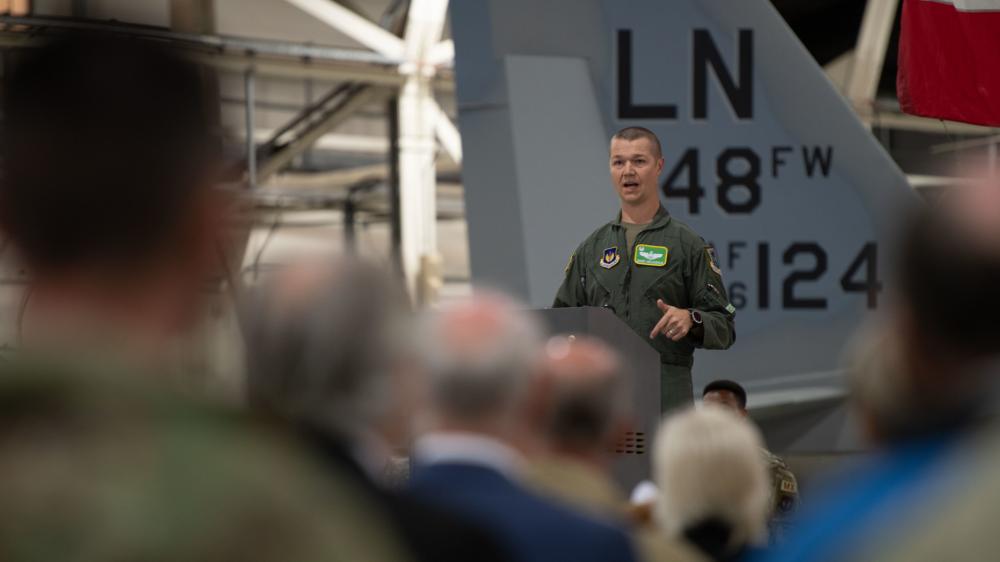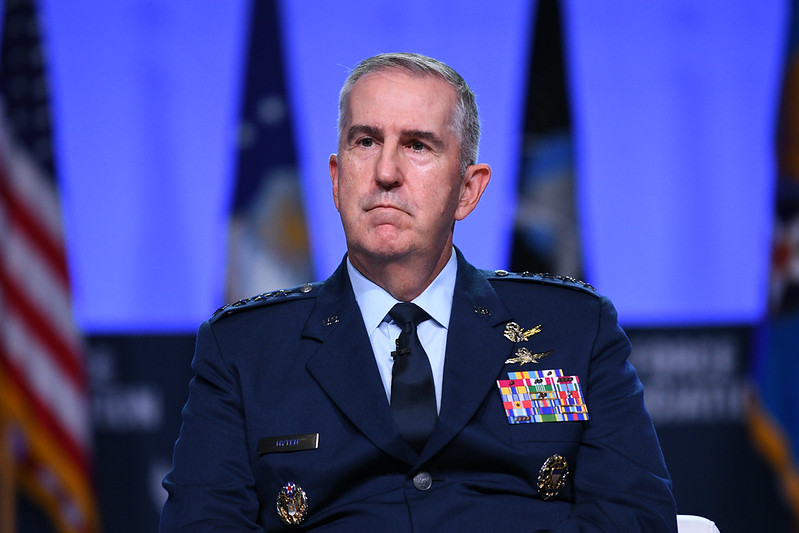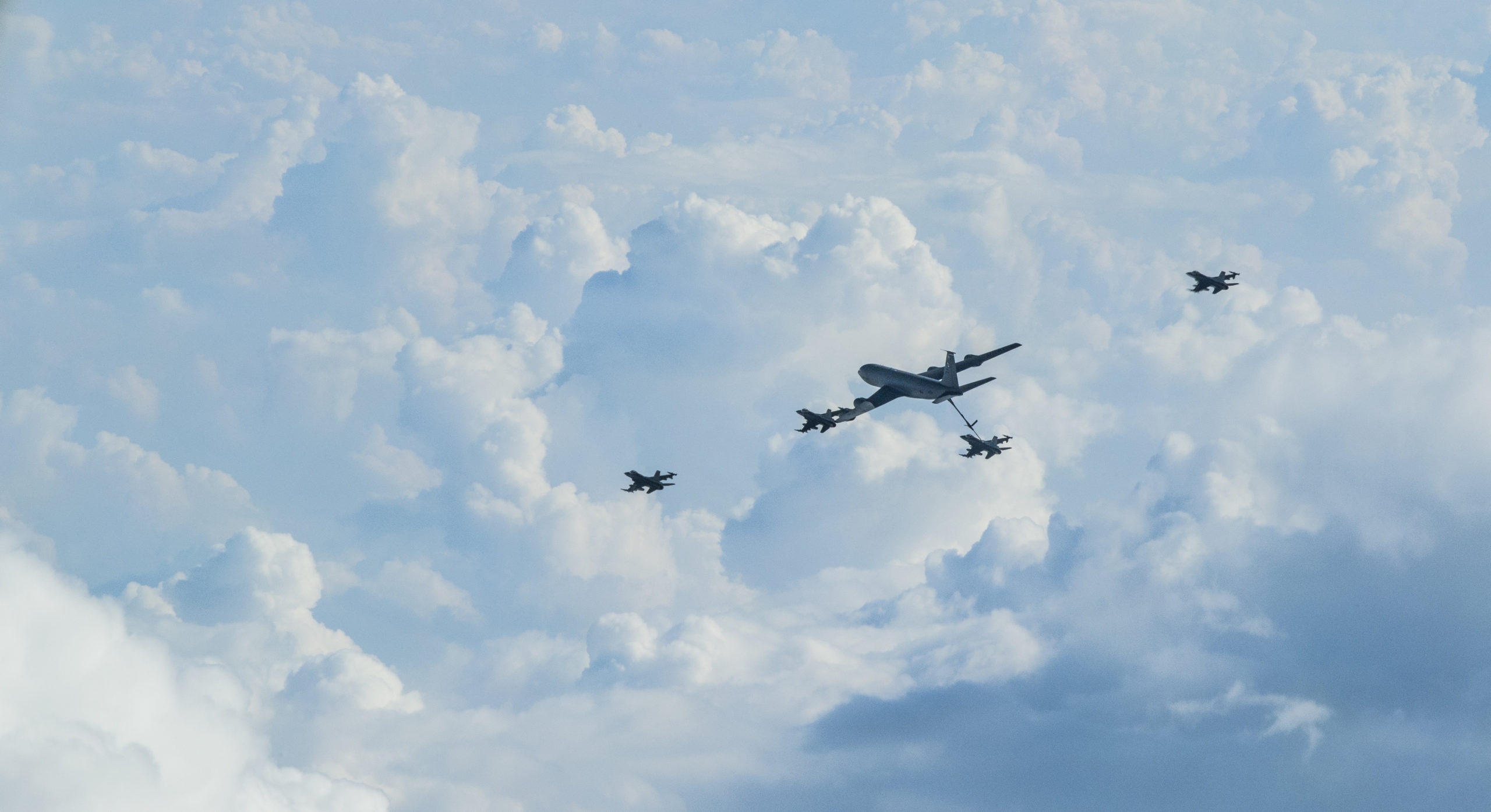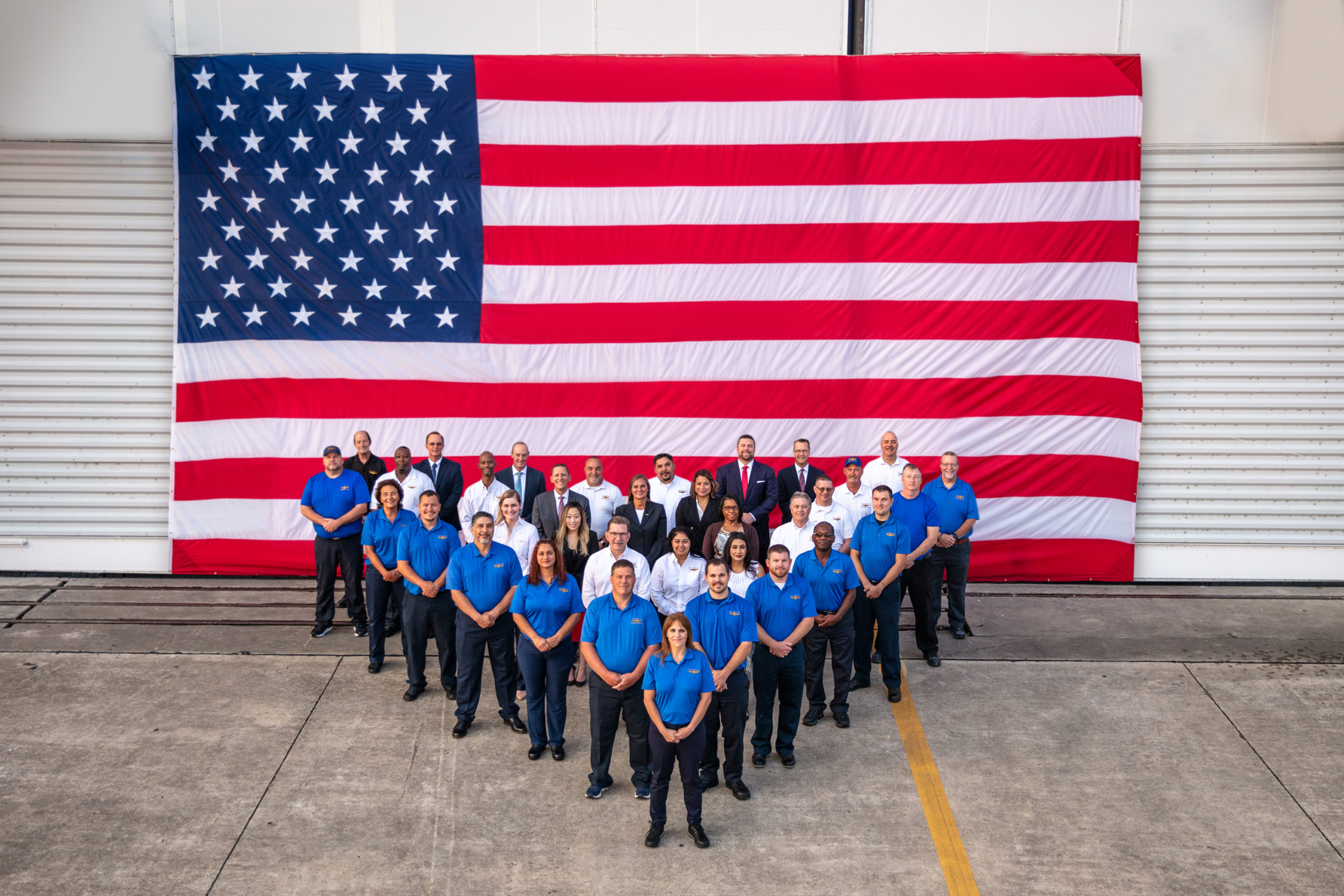The wife of the Space Force’s first Chief of Space Operations is opening up channels of communication to try to connect with the loved ones of members, including an email newsletter to which she hopes to add subscribers.
The newness of the Space Force provides “an opportunity to build a culture of care, and connection, and support with our family members and our loved ones,” said Mollie Raymond, wife of Gen. John W. “Jay” Raymond, during a town hall talk on families during the Air Force Association’s 2021 Air, Space & Cyber Conference.
And because of its small size, she suggested that the service could “do things a little creatively.”
Mollie Raymond’s October 2021 newsletter includes a rundown of recent developments in the service including the publication of the USSF’s talent management plan, The Guardian Ideal; the previewing of uniform prototypes; and the transfers of five units from the Army and Navy into the Space Force.
She invited loved ones to subscribe to the newsletter and to connect with her on her official LinkedIn page, Facebook, or Twitter, where she encourages followers to contact her with any questions.
As of the town hall, she had about 1,300 addresses on her mailing list. “Tell your spouses,” she said. “Tell your loved ones. Tell your extended family members.” She hopes recipients will feel “supported and informed and connected,” she said. “I have parents reaching out—moms and dads—and I couldn’t be more pleased about that.”
During his earlier conference keynote speech, Gen. Raymond took the opportunity to provide some advice on the family front.
“Do me a favor: When you’re done today,” he said, “call back home and say thanks.” Because, he added later at the town hall: “When you’re done—when your career is all over—the only thing you have is your family.”
